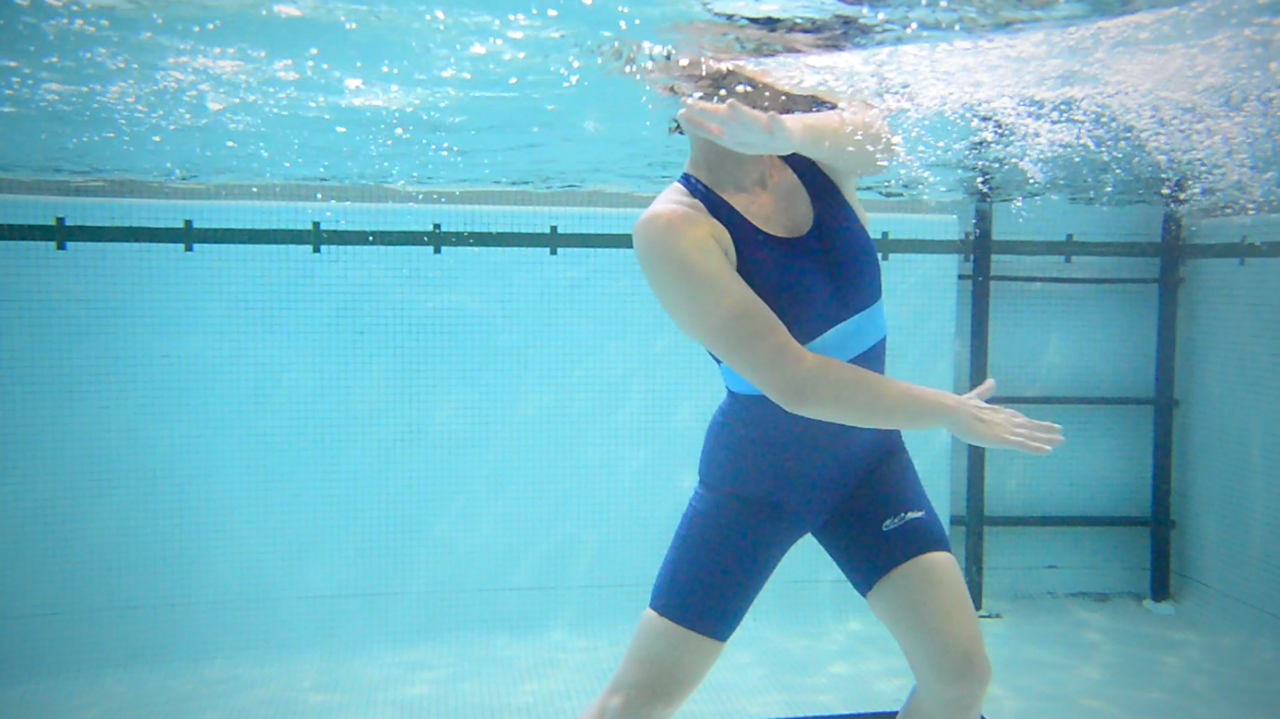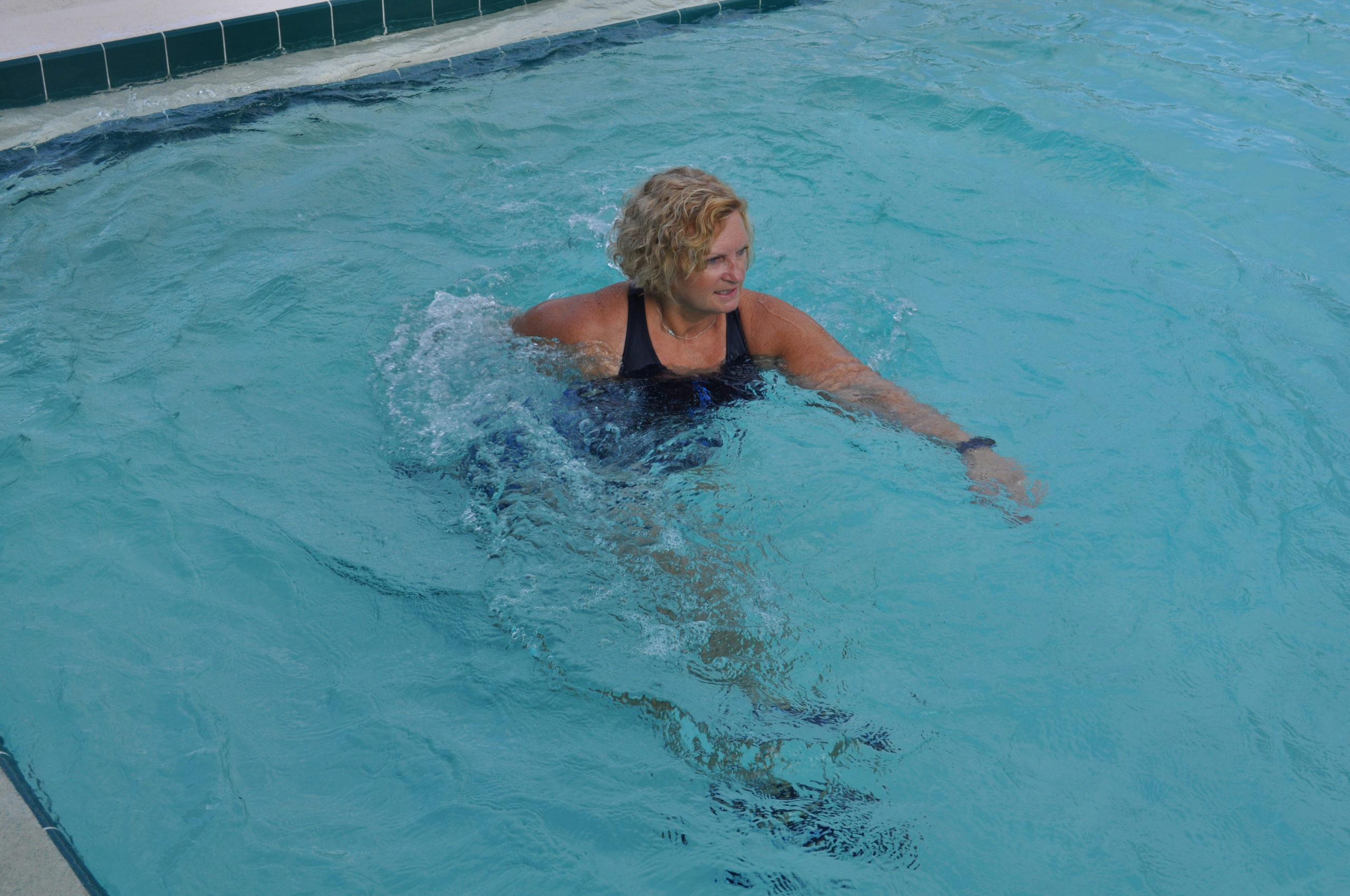When it comes to water exercise, or even any exercise, a common misconception is that slow movements are easy and less effective. But this couldn’t be further from the truth. In reality, moving slowly in the water can reveal our weaknesses, enhance muscle control, and improve overall fitness. Let’s dive into why slow doesn’t mean easy and how it can transform your water workout routine.
Why Slow Movements Matter

1. Increased Muscular Effort
In the water, buoyancy supports your body, making certain movements feel easier when compared to land exercises. For example, jumping in the pool reduces the load on your joints significantly, making it a less painful activity. However, this ease can lead to a natural inclination to move quickly, taking advantage of momentum rather than muscle strength. When you move slowly, you engage more muscles because you’re working against the water’s resistance. This deliberate resistance builds lean muscle and protects your joints.
2. Better Control and Stability
Slow movements require precise control, especially in the water where buoyancy and resistance can vary. By moving slowly, you can better manage changes in direction and improve muscle engagement. For instance, transitioning from a sit to stand position in the pool forces your muscles to work harder to control your body’s movement and stabilizes your posture. This slow, controlled movement can help you relearn proper movement patterns and enhance muscle strength.
3. Enhanced Core Strength
Water exercises engage the core muscles in a powerful way. Slowing down movements increases the demand on your core to maintain stability and proper alignment. With water constantly moving around you, your abs and back must work harder to keep you steady, providing a comprehensive workout for your core.
3 Tips for Effective Slow Movements

1. Go Uncomfortably Slow
To truly benefit from slow movements, push yourself to move uncomfortably slow. This level of discomfort forces your body to engage stabilizing muscles and correct your posture, leading to better muscle control and strength. For example, practice slow, deliberate squats and stretches in the pool, focusing on form and muscle engagement.
2. Combine Slow and Fast Movements
Incorporate both slow and fast movements into your routine to maximize benefits. Start by performing an exercise slowly to learn the correct technique and muscle engagement. Once mastered, increase the speed while maintaining good form to boost cardiovascular strength and muscle endurance. This method combines the benefits of resistance training and cardio. Try it here inside Wavemakers with Fast Mobility: Power Balance Circuit.
3. Move in Your Biggest Feel-Good Range
Moving slowly allows you to explore your full range of motion, which can enhance flexibility and identify imbalances in your body. For example, slow cycling movements in the pool can reduce stiffness in the knees and hips while providing an extra stretch. Pay attention to how your body feels and adjust movements to maximize comfort and effectiveness. Try this with a Wavemakers workout: Goodbye Tightness: Knees & Hips.
Learn how to use these tips to get relief from pain, increase energy and improve strength with Functional Mobility Guided Workouts. These sessions emphasize movement diversity as you push, pull, lift, reach, and turn in ways that mirror everyday activities, making sure you’re always ready for whatever comes your way.
Real-World Applications
The principles of slow movements in water can be applied to everyday activities. For instance, golfers benefit from a slow backswing to transfer weight effectively and hit the ball with power. Another example: eating slowly can improve digestion and prevent overeating. Water exercise teaches us the value of slowing down and being mindful of our movements, leading to better overall health, whatever it is your life throws at you.
The Takeaway
Slow movements in water exercise are far from easy; they require control, stability, and muscle engagement. By incorporating slow movements into your water workout routine, you can build strength, improve technique, and enhance overall fitness. Embrace the challenge of moving slowly and discover the profound benefits it can bring to your health and well-being.
For more insights and specific workout routines, dive into Wavemakers to help you discover the power of slow and take your water exercises to the next level. Become a Wavemaker here.
